Amid the once-tranquil village of Sanxingdui, in a quiet part of Sichuan province in China, a remarkable discovery took place which immediately attracted international attention and has since rewritten the history of Chinese civilization. Two giant sacrificial pits were unearthed containing thousands of gold, bronze, jade, ivory and pottery artifacts that were so unusual and unlike anything ever found in China before that archaeologists realized they had just opened the door to an ancient culture dating back between 3,000 and 5,000 years.
In the spring of 1929, a farmer was digging a well when he discovered a large stash of jade relics. This was the first clue that eventually led to the discovery of a mysterious ancient kingdom. Generations of Chinese archaeologists searched the area without success until 1986, when workers accidentally found the pits containing thousands of artifacts that had been broken, burned, and then carefully buried.
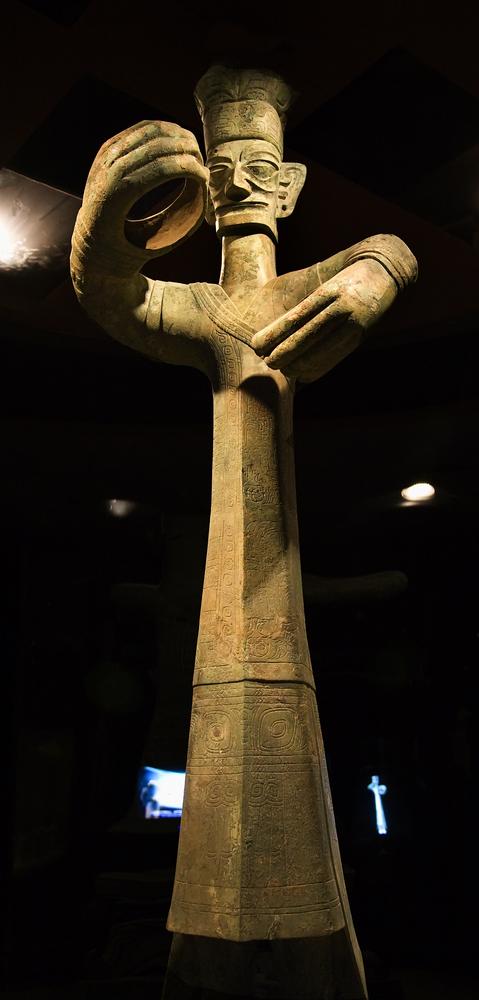
A 3,000-year-old bronze statue found in the village of Sanxingdui, China. (Shutterstock)
The discovery of the artifacts opened up a world of intrigue. The objects found in the sacrificial pits included animal-faced sculptures and masks with dragon ears, open mouths and grinning teeth; human-like heads with gold foil masks; decorative animals including dragons, snakes, and birds; a giant wand, a sacrificial altar, a 4-meter-tall (13-foot-tall) bronze tree; axes, tablets, rings, knives, and hundreds of other unique items. Among the collection was also the world’s largest and best preserved bronze upright human figure, measuring 2.62 meters (8 feet).
However, by far the most striking findings were dozens of large bronze masks and heads represented with angular human features, exaggerated almond-shaped eyes, straight noses, square faces, and huge ears, features which don’t reflect those of Asian people.
The artifacts were radiocarbon dated to the 12th-11th centuries BC. They had been created using remarkably advanced bronze casting technology, which was acquired by adding lead to a combination of copper and tin, creating a stronger substance that could create substantially larger and heavier objects, such as the life-size human statue and the 4-meter-tall (13-foot-tall) tree.
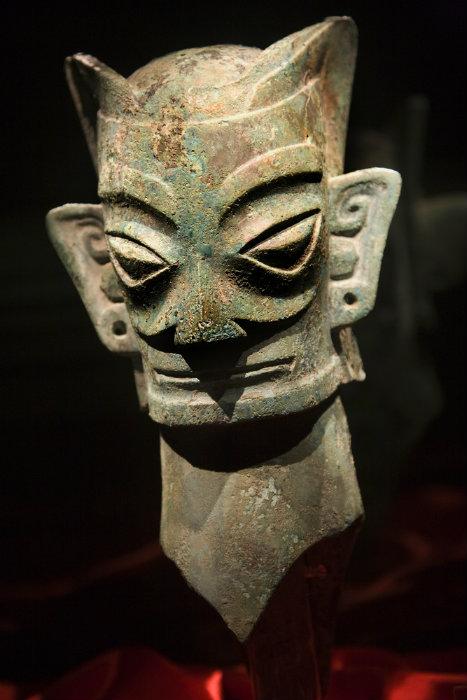
A 3,000-year-old bronze statue found in the village of Sanxingdui, China. (Shutterstock)
Some of the masks were enormous in size – one measures an incredible 1.32 meters (1.33 feet) in width and 0.72 meters (2.36 feet) in height, the largest bronze mask ever found. The three largest masks have the most supernatural features of all the Sanxingdui artifacts, with animal-like ears, monstrously protruding pupils, or an additional ornate trunk.
Researchers were astonished to find an artistic style that was completely unknown in the history of Chinese art, whose baseline had been the history and artifacts of the Yellow River civilization(s).
The spectacular discovery at Sanxingdui in 1986 turned Sichuan into a focal point in the study of ancient China. The ancient artifacts found in the two pits date to the time of the Shang dynasty, in the late second millennium BC, when the primary civilized society was flourishing in the Yellow River valley, in north China, thousands of miles from Sichuan. No similar find has been made anywhere else, and there are no inscriptions at the Sanxingdui site to shed light on its culture, which was apparently a distinctive Bronze Age civilization, unrecorded in historical texts and previously unknown. The discovery contributed to a fundamental shift from the traditional understanding of a single centre of civilization in north China to the recognition of the existence of multiple regional traditions, of which Sichuan was clearly one of the most distinct.
The culture that produced these artifacts is now known as the Sanxingdui Culture, and archaeologists are identifying it with the ancient kingdom of Shu, linking the artifacts found at the site to its early legendary kings. References to a Shu kingdom that can be reliably dated to such an early period in Chinese historical records are scant (it is mentioned in Shiji and Shujing as an ally of the Zhou who defeated the Shang), but accounts of the legendary kings of Shu may be found in local annals.
According to the Chronicles of Huayang...
According to the Chronicles of Huayang compiled in the Jin Dynasty (265–420 AD), the Shu kingdom was founded by Cancong. Cancong was described as having protruding eyes, a feature that is found in the figures of Sanxingdui. Other rulers mentioned in Chronicles of Huayang include Boguan, Yufu, and Duyu. Many of the objects are fish and bird-shaped, and these have been suggested to be totems of Boguan and Yufu (the name Yufu actually means fish cormorant).
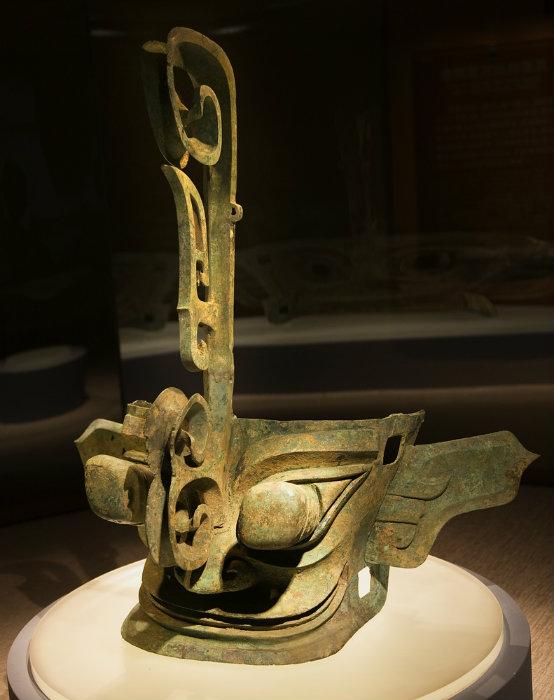
A 3,000-year-old bronze mask found in the village of Sanxingdui, China. (Shutterstock)
A metropolis of its time, covering about three square kilometers (1.8 square miles), Sanxingdui had highly developed agriculture, including winemaking ability, ceramic technology and sacrificial tools and mining was commonplace. According to archaeological findings, the settlement at Sanxingdui was abandoned suddenly around 1,000 BC. For reasons that are still unknown, the prime of Sanxingdui Culture came to an abrupt end.
The sacrificial pits are believed to have been sites for the ancient Shu people to offer sacrifice to Heaven, Earth, mountains, rivers, and other natural gods. The human-like figures, bronze animal-faced masks with protruding eyes and flat bronze animal-faced masks may be natural gods worshiped by the Shu people.
“Judging from the numerous bronze human images and funerary objects, the ancient Sanxingdui kingdom had unified and ruled the people through primordial religion. They worshiped nature, totems and their ancestors. The ancient Shu kingdom probably often held grand sacrificial activities to attract tribes with different religious beliefs to come from far and near to worship,” said Ao Tianzhao from the Sanxingdui Museum, who has been studying the Sanxingdui culture for half a century. He believes the large number of bronze artifacts at Sanxingdui indicates that this site used to be a mecca for pilgrims.
Since the discovery, these artifacts have received a great amount of international interest and attention. They have been exhibited at world renowned museums such as The British Museum, Taipei’s National Palace Museum, National Gallery of Art (Washington), Guggenheim Museum (New York), Asian Art Museum (San Francisco), Art Gallery of New South Wales (Sydney) and Lausanne Olympic Museum (Switzerland). A selection of the artifacts are now making their way to the Bowers Museum in Santa Ana, California, where the exhibition, ‘China’s Lost Civilization: the Mystery of Sanxingdui’, will be featured from 19th October 2014 to 15th March, 2015.
The discovery of Sanxingdui shocked the world, but the history of the artifacts remains a mystery. Only the contents of two solitary pits reflect the immemorial and brilliant civilization of the Shu – no other artifacts like them have ever been found since. There are no historical records, and no ancient texts that speak of them, leaving experts asking what the purpose of the objects was, where the culture came from, and where they went after burying their most precious treasures. The Sanxingdui civilization is a unique page in China’s long history and for now it remains an enigma.
Republished with permission from Ancient-Origins.net. Read the original.
Visit the Epoch Times Beyond Science page on Facebook to continue exploring the new frontiers of science!
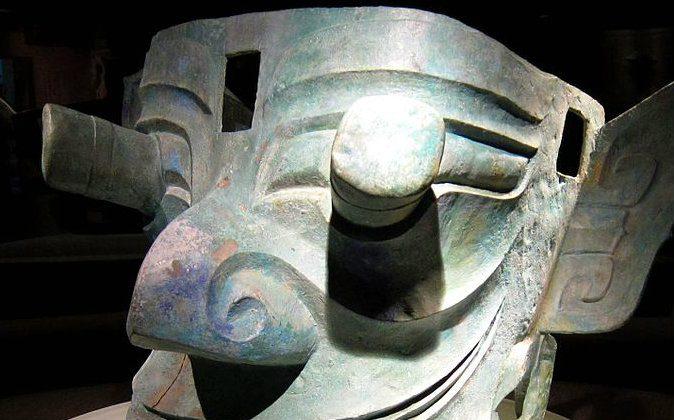
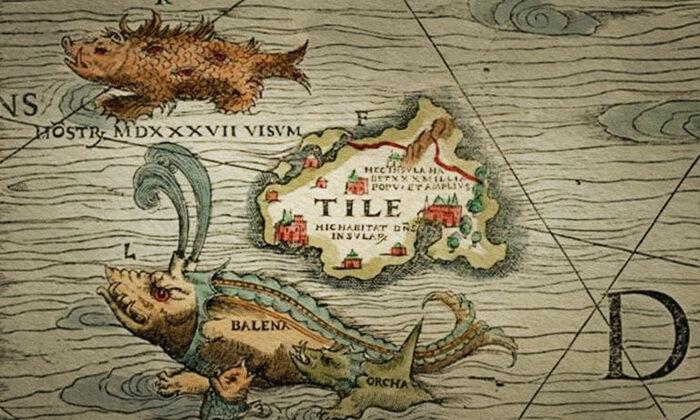
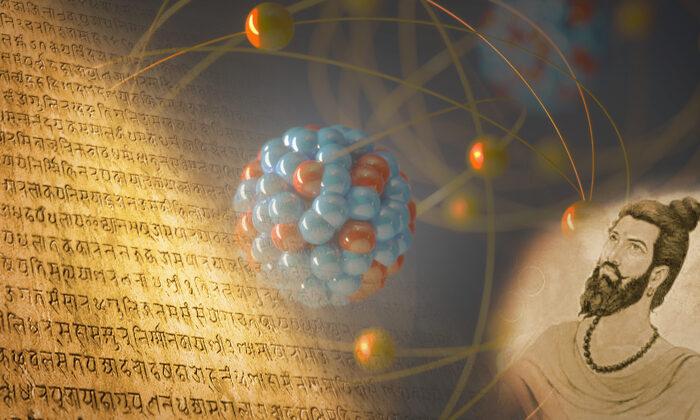
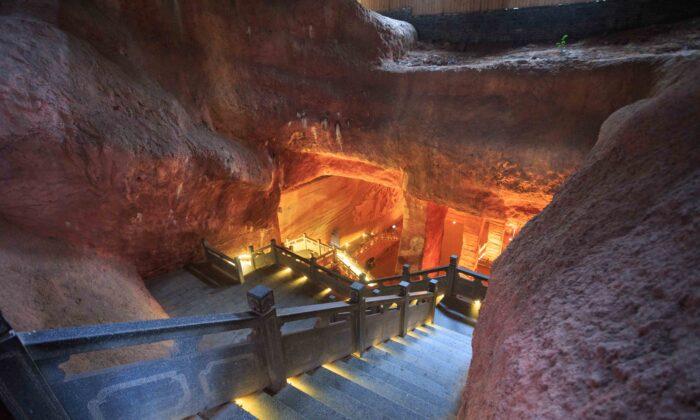
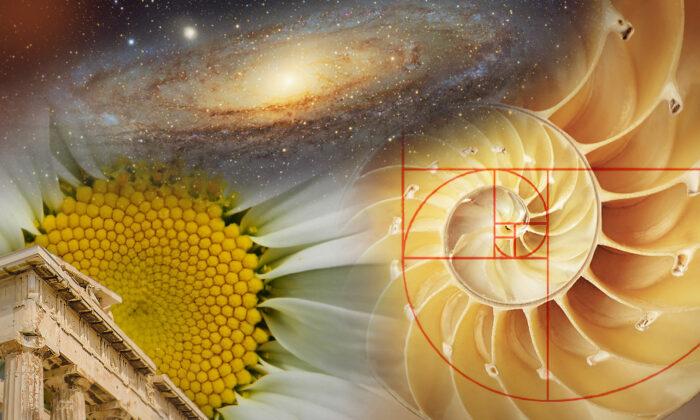
Friends Read Free